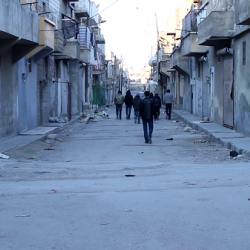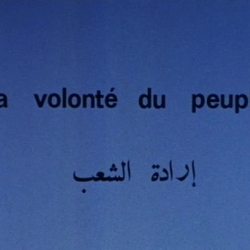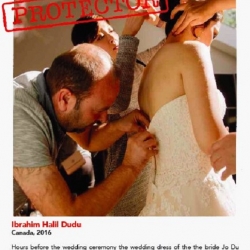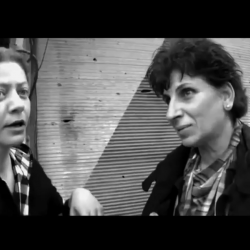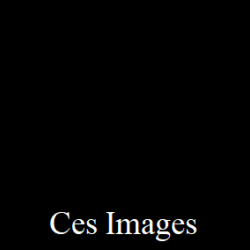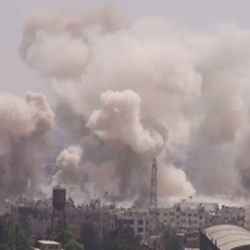All this Victory: Fleeing the Crime Scene
11/03/2020
Author: Khaled Saghieh
In the film Recollection (2015), the Palestinian director Kamal Jafari gathers all the Israeli and American films filmed in his hometown, Jaffa. He breaks them down into thousands of images, and then proceeds to efface the images of the actors so that only the city of Jaffa and its inhabitants remain. This was the director’s way to seek revenge, in a manner of speaking; Revenge for his hometown which has been exposed to a long history of defacement, and revenge against the filmmakers who were seemingly unable to see neither Jaffa or its inhabitants when they came to narrate their films. Instead they trampled over everything, to as a means to appropriate the city, transforming it into a set, mere ‘décor’ for their commercial action films.
If Jaffa weren’t one of the Palestinian cities that experienced the Nakba, and if Israel wasn’t still defacing Palestinian spaces, Recollection would not have received the attention it did. But Jaffa being Jaffa, the process of “recollection” can only be read as a political act. Similarly, the fact that Chuck Norris and his colleagues shot films in Jaffa in the 1980s, can only be read as a form of collaboration, even if unintentional, in the Israeli operation of erasure.
Ravenous Cameras
For those who’d seen Recollection, it was hard not to conjure its ghosts during the debate surrounding the recent Lebanese film, All this Victory, even before its release. As a matter of fact, the debate isn’t related to the film’s content, but rather to how and where a few of its scenes were filmed. Set in South Lebanon during the July 2006 war, the film had been missing scenes of destruction after the reconstruction of the south. A decision was made, therefore, to film in parts of western Syria bordering Lebanon, an area where destruction was still ‘fresh’ and able to satisfy the camera’s appetites.
In choosing this location, did the director commit a sin? Did he surrender to production exigencies and sought refuge in the easiest available option? Or was it the decision of a director attempting to leapfrog templates and readymade ideas by asking the kinds of difficult question we’d come to expect from his previous film, My Father is Still a Communist (2013)? These questions become even more urgent in light of the near-total absence of art criticism in general, and an overarching tendency to avoid political critique not simply for artistic work, but even for its politics of production. Critique is denounced as repressive, even when it pertains to the images of those who now stand completely isolated before tanks, hatred, and ravenous cameras.
It seems to me that filming somewhere between Zabadani and Qusayr is a double-edged problem. To be sure, ‘fresh’ destruction was still under the military control of the perpetrators. The same authorities that gave permission to the film had destroyed the area and prevented its people from returning. This wasn’t really an attempt to ‘trick’ those perpetrators in order to present a narrative of what had happened in Qusayr/Zabadani. The trick was really gaining entry to an area in the absence of its inhabitants so as to use the destruction in a narrative about another war. Perhaps the director didn’t notice that the film contributed to silencing the stories of people from the area after he’d been granted permission by the same perpetrators—or their ‘acolytes’—who’d forcibly displaced the people of Qusayr/Zabadani.
Victims and Killers
It becomes increasingly problematic when the identities of the killers and the victims are added into the equation, and the role reversal between the July 2006 War and the wars against Qusayr and Zabadani. Whereas Hezbollah was aggressed in July 2006, in Syria it was the aggressor. This is what makes the use of Qusayr/Zabadani’s destruction and the silencing of their inhabitants’ narratives so significant in their political symbolism. The director is not the first to use the Syrian tragedy as mere ‘décor’ or staging for Israeli wars. Hezbollah itself beat him to it when they used Syria as decor for a “critical” film about the July war, and later used the director himself to make a film whose production upholds the grand narrative of the Resistance.
According to that narrative, Qusayr, Zabadani and their casualties are mere collateral damage in the mission of saving the nation from the looming dangers, ones that ask us to look back on the July 2006 war to understand their true source. And so the director’s attempt to use Hezbollah to make a ‘critical’ film on the July 2006 war was transformed into Hezbollah using the director to make a film, whose production circumstances promotes the narrative of the Resistance.
Perhaps that’s what makes waiting to watch the film before critiquing it pointless. Compounding the pointlessness of waiting was the director’s ‘response’ to the debate unfolding on Facebook. In a piece that’s hard to classify as journalism, the director offers no subversive reading for what he did in Syria, but rather presents the July 2006 war as a ‘dramatic space’ in which the sufferings of civilians in all wars circulate; Wars that are seemingly the same everywhere, to the extent that the director who took refuge (against his will?) in a naive humanitarianism that shrouds the identity of killers and evacuates his film from the space of politics. If, indeed, civilians are the issue, where exactly are the civilians of Qusayr and Zabadani? Are they really in desperate need of someone to efface their narratives—which is all they have left—someone who transforms their killers into distributors of artistic permits?
In fact, the ‘civilians’ pretext doesn’t even hold up for the director, who goes on to claim that the destruction of homes and villages makes him feel “the need to use my camera to bring this memory back to life.” The director, of course, doesn’t mean the memory of Qusayr or the memory of Zabadani, which are neither Qusayr or Zabadani in the film, nor they are the memory of its absent civilians from the(ir) film, their cities, and their villages.
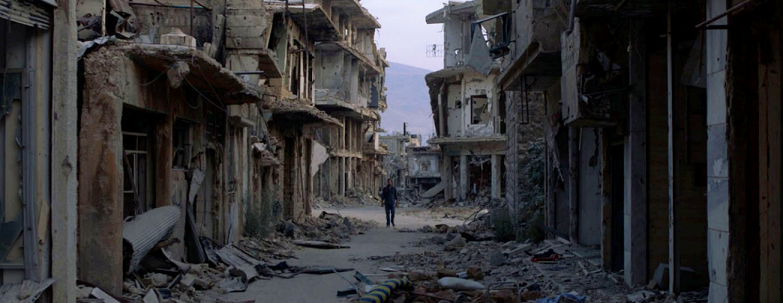
Photo Credit: Director of Photography Shadi Shaaban in Syria
The Right of the Defeated to Their Image
The director may not have intended to erase one collective memory so as to revive another. His intentions aren’t really the point, for we are not pointing fingers, or trying to place the film on some blacklist. This issue isn’t only about an individual error, but also about a lost sense of responsibility and sensitivity towards the right of the defeated to their own image amidst an open wound, a right that has sparked during the revolution. It’s a discussion fueled by the abundance of clips circulating online with the spread of citizen journalism, and then with the release of the Caesar Files Group, which show photographs of the bodies of detainees killed under torture in Syrian regime prisons. The debate has mainly revolved around the dignity of those bodies, and whether it’s permissible or effective to use them publicly, either as public forensic evidence or as a cry for help to attract the world’s attention. That was in the midst of revolution. Now, however, it seems that the bodies of the Syrians and the destruction of their cities are available for rent. The Syrian tragedy no longer deserves to be told. As for the bodies of the Syrians and the remains of their cities, they have become bones for other bodies. Their killers’ bodies, perhaps.
After completing Recollection the director narrated that he was a child when he first saw his city turned upside down in preparation for filming a Chuck Norris movie. The image stayed with that kid for thirty years, before his own film ever saw the light of day. Were any of Qusayr or Zabadani’s children around when the director of All this Victory carried his camera through the destruction of their towns? How might this child salvage the images of his or her city from amidst the folds of a ‘humanitarian’ movie? At the time of filming, Qusayr and Zabadani, unlike Jaffa in the 1980s, probably didn’t have any children left to bear witness. The area had already been emptied of its inhabitants. Only echoes of all this victory remained. The lights had been switched off. You can enjoy the show.
This article was translated from Arabic to English by Stefan Tarnowski



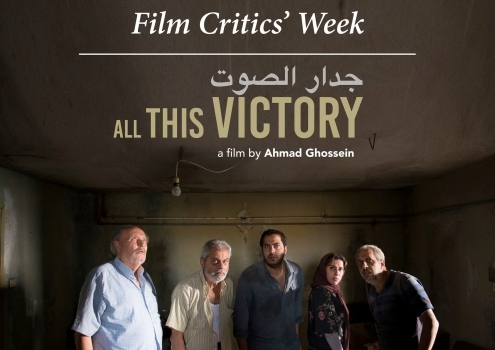




.jpg)
